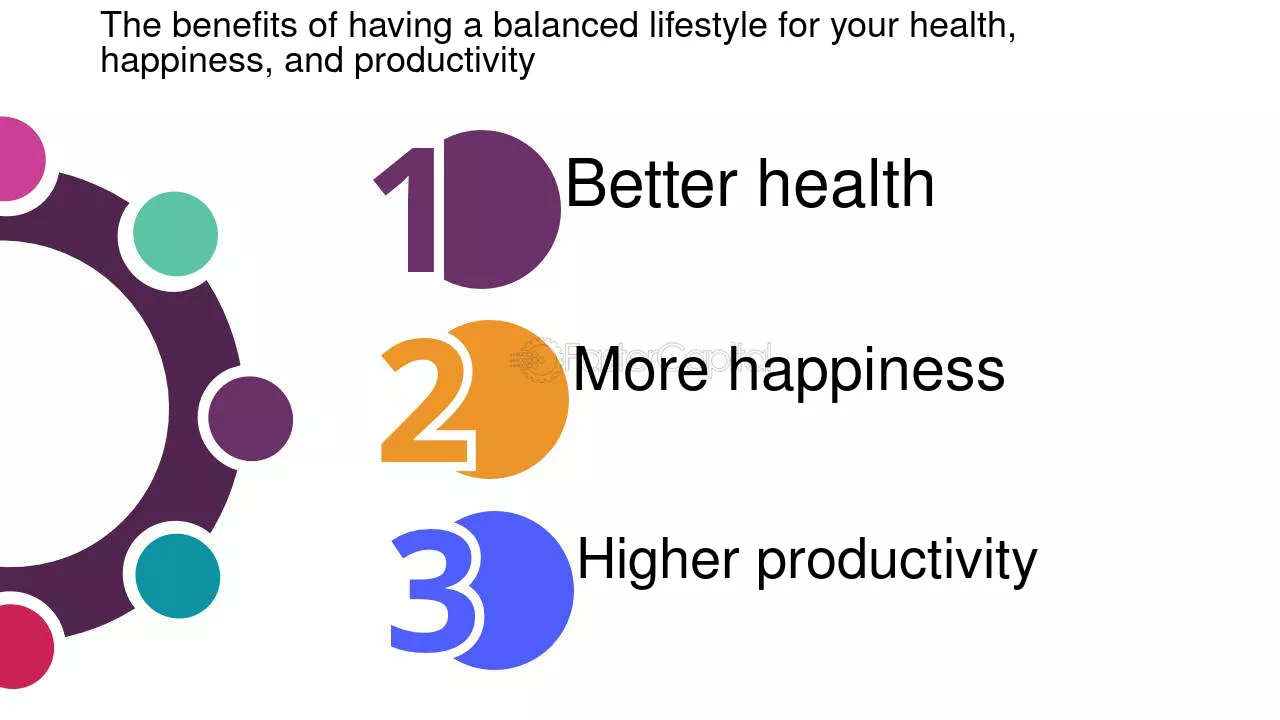Fashion
The Power of face reality: A Path to Authentic Living

Life is a collection of moments, some bright and full of promise, others dark and demanding. The common thread among all these moments is their foundation in reality. Whether we choose to embrace the truth or shy away from it, one thing remains constant: reality doesn’t change to suit our wishes. Learning to face reality is not just a matter of practicality but a path toward personal growth, emotional resilience, and long-term fulfillment.
Facing Reality involves more than simply acknowledging that things exist as they are. It is an active process that requires courage, honesty, and the willingness to confront uncomfortable truths. Many people spend their lives avoiding certain aspects of their reality—whether it’s about their relationships, careers, or personal shortcomings. This avoidance creates more significant problems in the long run, trapping individuals in cycles of frustration and discontent.
Why Is It So Difficult to Face Reality?
There is something inherently challenging about looking at the world, or even ourselves, without the comforting filter of denial or fantasy. Humans have a natural tendency to avoid discomfort, and facing reality often brings with it difficult emotions like disappointment, fear, or regret. However, when we avoid the truth, we also forfeit the opportunity to grow, learn, and change.
Denial as a Defense Mechanism
Many people rely on denial as a way to protect themselves from emotional pain. It’s a form of self-deception that, in the short term, can make life seem easier. However, as time passes, the gap between one’s perception and actual reality grows larger, making it increasingly difficult to align the two. Eventually, this dissonance can lead to anxiety, stress, and even mental health issues like depression.
Fear of Failure
Another significant reason people avoid facing reality is the fear of failure. Acknowledging the truth often forces individuals to come to terms with mistakes or shortcomings. Admitting that a relationship is failing, or that a career path isn’t fulfilling, may seem like an admission of defeat. But, in reality, it’s an opportunity for a new beginning.
The Benefits of Embracing Reality
While it may feel easier to live in denial or fantasy, the benefits of facing reality far outweigh the temporary discomfort it brings. When we confront the truth head-on, we open the door to personal empowerment and long-term growth.
Emotional Freedom
Facing reality liberates you from the emotional weight of avoidance. Denying the truth can be mentally and emotionally exhausting, as it requires constant effort to maintain a false narrative. Once you accept reality, you free up mental space and emotional energy to focus on things that truly matter, like personal growth or building healthier relationships.
Building Resilience
Confronting difficult truths builds emotional resilience. Life will always have its challenges, but the more you practice facing them, the more adept you become at managing hardships. Over time, the very things that once seemed unbearable become opportunities for growth and learning.
Making Better Decisions
When you face reality, you’re in a better position to make informed decisions. Whether it’s about your career, your relationships, or your personal goals, understanding the truth of your situation helps you take constructive action. Living in denial, by contrast, often leads to poor decisions that are based on wishful thinking rather than facts.
Developing Authentic Relationships
Facing reality also extends to your interactions with others. When you’re honest with yourself, you’re more likely to be honest with those around you. This honesty fosters authentic relationships built on trust and mutual respect. People are drawn to those who are genuine and self-aware because these qualities create a foundation for deep, meaningful connections.
Practical Steps to Start Facing Reality
Facing reality might seem daunting, but it’s a process that can be cultivated through self-awareness and deliberate action. By following these practical steps, you can gradually learn to confront your truths and embrace life as it is.
Start with Self-Reflection
The first step in facing reality is to cultivate self-awareness through regular reflection. Ask yourself questions like, “Am I living in alignment with my values?” and “Are there aspects of my life that I am avoiding confronting?” By taking the time to reflect, you can uncover areas where denial or avoidance may be holding you back.
Get Comfortable with Discomfort
Facing reality often means experiencing discomfort, whether it’s the pain of acknowledging a failed relationship or the anxiety of realizing you need to change careers. Instead of running from these feelings, practice sitting with them. Remember that discomfort is a natural part of growth and change.
Seek Objective Feedback
Sometimes, it’s challenging to see your own blind spots. Seeking feedback from trusted friends, mentors, or professionals can help you gain a clearer understanding of your reality. Objective feedback offers new perspectives and can guide you toward making more informed decisions.
Focus on Solutions, Not Problems
While facing reality requires acknowledging problems, it doesn’t mean you have to dwell on them. Shift your focus toward finding solutions. Once you understand the truth of a situation, ask yourself, “What can I do to change this?” or “What’s the best way to move forward?” This problem-solving mindset transforms obstacles into opportunities for growth.
Practice Mindfulness
Mindfulness is a powerful tool that helps you stay grounded in the present moment. By practicing mindfulness, you can learn to observe your thoughts and feelings without judgment, making it easier to accept reality as it unfolds. When you’re mindful, you’re less likely to get lost in fantasies about how things “should be” and more inclined to accept things as they are.
The Role of Acceptance in Facing Reality
A crucial aspect of facing reality is acceptance. Acceptance does not mean giving up or resigning yourself to a life you don’t want. Instead, it’s about recognizing the present moment for what it is—without the need to fight against it or wish for something different.
Radical Acceptance
A concept from mindfulness practices, radical acceptance is the idea that we must accept things as they are, even when they are difficult or painful. This doesn’t mean we don’t work to improve our circumstances, but rather that we stop resisting reality. When we stop fighting the truth, we open ourselves up to peace, clarity, and the ability to make meaningful changes.
Letting Go of Control
Another part of acceptance is letting go of the need to control every aspect of life. Many of us avoid facing reality because we fear losing control. However, the truth is that much of life is beyond our control. By accepting this, we can reduce anxiety and focus our energy on the things we can influence.
Facing Reality in Relationships
Relationships, whether romantic, familial, or platonic, are often the most challenging areas in which to face reality. Many people hold onto unhealthy relationships, hoping that things will change or that their partner will become the person they need. However, without confronting the reality of the relationship, both parties remain stuck in patterns of dissatisfaction and unmet expectations.
Recognizing Red Flags
One of the first steps in facing reality within relationships is learning to recognize red flags. These can include consistent disrespect, lack of communication, or unequal effort in maintaining the relationship. Acknowledging these signs early on allows you to make informed decisions about whether to continue or end the relationship.
Communicating Honestly
Honest communication is key to building and maintaining healthy relationships. Facing reality means expressing your needs, concerns, and feelings openly with your partner. While these conversations can be uncomfortable, they are necessary for the growth and success of any relationship.
Overcoming the Fear of Facing Reality
It’s natural to fear the unknown, and facing reality often feels like stepping into uncharted territory. However, by understanding the roots of this fear, you can begin to overcome it.
Fear of Change
One of the most common reasons people avoid facing reality is the fear of change. Change can be scary, especially when it involves leaving behind something familiar. However, embracing change is essential for growth. The more you practice confronting your fears, the more you will come to realize that change, while uncomfortable, often leads to positive outcomes.
Fear of Judgment
Another common fear is the fear of being judged by others. People worry about how their actions, decisions, or mistakes will be perceived. However, it’s important to remember that everyone has their own struggles, and most people are far more concerned with their own lives than judging yours. Facing reality often requires you to prioritize your own well-being over the opinions of others.
Conclusion
Facing reality is not always easy, but it is essential for living a fulfilling, authentic life. By confronting uncomfortable truths and accepting life as it is, you unlock the potential for personal growth, stronger relationships, and a more meaningful existence. Embrace the power of facing reality, and you’ll find that the rewards far outweigh the challenges.
FAQs
What does it mean to face reality?
Facing reality means acknowledging the truth of a situation, even when it’s uncomfortable or difficult. It’s about accepting things as they are and making informed decisions based on that reality.
Why is it important to face reality?
Facing reality is essential for personal growth, emotional well-being, and making better decisions. Avoiding the truth can lead to frustration, anxiety, and poor choices.
How can I start facing reality?
Start by practicing self-reflection, seeking objective feedback, and getting comfortable with discomfort. Focus on solutions rather than problems, and embrace mindfulness to stay present.
Is facing reality the same as giving up?
No, facing reality is not about giving up. It’s about accepting things as they are so you can make meaningful changes in your life.
Why do people avoid facing reality?
People avoid facing reality because of fear—fear of failure, change, or judgment. Denial also serves as a temporary defense mechanism to avoid emotional pain.
How can facing reality improve my relationships?
Facing reality allows for honest communication and helps you recognize when a relationship is no longer serving you. It fosters authentic connections built on trust and mutual respect.
Fashion
The Ultimate Guide to a Balanced Lifestyle: A Path to Health, Happiness, and Success

The Ultimate Guide to a Balanced Lifestyle: A Path to Health, Happiness, and Success. In today’s fast-paced world, the concept of a balanced lifestyle is more important than ever. Many of us juggle demanding careers, personal relationships, health goals, and leisure activities, often feeling like there’s never enough time to balance it all. However, adopting a healthy lifestyle is not just about organizing your time better; it’s about nurturing your mind, body, and soul to achieve long-term happiness and well-being. This article delves into the essentials of a balanced lifestyle, covering key areas such as physical health, mental well-being, relationships, work-life harmony, and personal growth.
What is a Balanced Lifestyle?
A balanced lifestyle refers to an approach to living that prioritizes health, well-being, and personal fulfillment. It involves finding harmony across all aspects of life, including work, family, health, and leisure. A well-balanced life doesn’t mean achieving perfection in every area, but rather creating a routine that meets your needs and aligns with your values.
Key components of a balanced lifestyle include:
- Physical health: Regular exercise, nutritious eating, and adequate sleep.
- Mental health: Stress management, mindfulness, and emotional resilience.
- Relationships: Strong connections with family, friends, and your community.
- Personal growth: Pursuing hobbies, learning new skills, and achieving personal goals.
Physical Health: The Foundation of a Balanced Lifestyle
Your physical health is the cornerstone of a balanced lifestyle. Without a healthy body, it becomes challenging to excel in other areas of life.
Nutrition
Eating a balanced diet is essential for maintaining energy, preventing diseases, and improving your mood. A healthy diet should include:
- Whole foods: Fruits, vegetables, whole grains, and lean proteins.
- Hydration: Drinking enough water throughout the day.
- Moderation: Avoiding processed foods and excessive sugar.
Exercise
Regular physical activity helps improve both physical and mental health. Aim for at least 150 minutes of moderate-intensity exercise per week, which could include:
- Cardiovascular activities like jogging or cycling.
- Strength training to build muscle and improve bone health.
- Yoga or stretching exercises to enhance flexibility and reduce stress.
Sleep
Quality sleep is often overlooked but is vital for maintaining energy and focus. Adults should aim for 7-9 hours of sleep per night. Tips for better sleep include:
- Creating a consistent sleep schedule.
- Avoiding screens before bed.
- Practicing relaxation techniques like deep breathing.
Mental Well-being: Nurturing Your Mind
Mental health is just as important as physical health in achieving a balanced It involves managing stress, staying positive, and maintaining emotional stability.
Stress Management
Chronic stress can lead to physical and emotional burnout. To manage stress effectively:
- Practice mindfulness meditation to stay present and calm.
- Organize your tasks using prioritization techniques like the Eisenhower Matrix.
- Take breaks throughout the day to recharge.
Positive Thinking
Cultivating a positive mindset can enhance your overall outlook on Ways to foster positivity include:
- Keeping a gratitude journal.
- Surrounding yourself with supportive people.
- Reframing challenges as opportunities for growth.
Mental Resilience
Building mental resilience helps you handle adversity with confidence. Strengthen your resilience by:
- Setting realistic goals and celebrating small wins.
- Practicing self-compassion and forgiving yourself for mistakes.
- Seeking professional help if needed, such as therapy or counseling.
Relationships: Building Strong Connections
Humans are social beings, and relationships play a significant role in our happiness and well-being. Investing time in building and maintaining healthy relationships is crucial.
Family and Friends
Strong relationships with family and friends provide emotional support and a sense of belonging. To nurture these connections:
- Schedule regular quality time, like family dinners or coffee dates.
- Communicate openly and listen actively.
- Resolve conflicts with empathy and understanding.
Community
Being part of a community fosters a sense of purpose. Ways to engage include:
- Volunteering for a cause you care about.
- Joining clubs or groups that align with your interests.
- Attending local events or workshops.
Romantic Relationships
For those in romantic partnerships, maintaining a healthy relationship requires effort and commitment. Focus on:
- Clear communication and expressing appreciation.
- Spending quality time together without distractions.
- Working through challenges as a team.
Work-Life Harmony: The Key to Avoiding Burnout
Balancing work and personal life is a challenge for many, but it’s essential for maintaining overall well-being.
Setting Boundaries
Creating clear boundaries between work and personal life can prevent burnout. Tips include:
- Turning off work notifications after office hours.
- Designating a specific workspace at home.
- Learning to say no to excessive demands.
Time Management
Effective time management allows you to make room for all aspects of your life. Strategies include:
- Using tools like calendars and to-do lists.
- Breaking tasks into smaller, manageable steps.
- Allocating time for relaxation and hobbies.
Finding Meaning in Work
Your career should align with your values and passions. If your current job doesn’t fulfill you, consider:
- Exploring new roles within your field.
- Pursuing further education or training.
- Transitioning to a career that excites you.
Personal Growth: Pursuing Your Passions
Personal growth is an ongoing journey that keeps life exciting and fulfilling. It’s about stepping out of your comfort zone and striving for continuous improvement.
Learning New Skills
Developing new skills boosts confidence and keeps your mind sharp. You can:
- Take online courses in areas like coding, cooking, or photography.
- Read books or listen to podcasts on topics of interest.
- Attend workshops or seminars.
Hobbies and Creativity
Engaging in hobbies allows you to express yourself and reduce stress. Whether it’s painting, gardening, or playing an instrument, find activities that bring you joy.
Setting Goals
Setting and achieving goals gives you a sense of purpose. Tips for effective goal-setting include:
- Using the SMART framework (Specific, Measurable, Achievable, Relevant, Time-bound).
- Breaking larger goals into smaller milestones.
- Reflecting on your progress regularly.
The Role of Leisure and Relaxation
Incorporating leisure into your routine is essential for recharging and maintaining a balanced lifestyle. Activities like traveling, watching movies, or spending time in nature can rejuvenate your spirit.
Travel and Exploration
Exploring new places broadens your perspective and provides a break from routine. Whether it’s a weekend getaway or an international trip, make time to travel.
Mindful Relaxation
Relaxation doesn’t always mean being idle. Mindful relaxation activities include:
- Reading a book or journaling.
- Practicing yoga or tai chi.
- Engaging in breathing exercises.
Overcoming Common Challenges
While striving for a balanced lifestyle, you may encounter obstacles. Here’s how to overcome them:
Lack of Time
- Focus on your priorities and delegate tasks when possible.
- Use the 80/20 rule: Identify the 20% of activities that yield 80% of the results.
- Limit time spent on non-essential activities like social media.
Procrastination
- Break tasks into smaller steps to make them more manageable.
- Set deadlines and hold yourself accountable.
- Reward yourself for completing tasks.
Self-Doubt
- Remind yourself of past successes to boost confidence.
- Surround yourself with supportive people who encourage you.
- Practice positive affirmations to combat negative thoughts.
Conclusion: Embracing a Lifestyle That Works for You
Living a balanced lifestyle is not about following a rigid formula; it’s about finding what works best for you. By prioritizing physical and mental health, fostering meaningful relationships, managing your time effectively, and pursuing personal growth, you can create a life that is fulfilling and harmonious.
Fashion
Fashion Design: The Art of Creating Style

Fashion design is more than just clothing—it’s an art form that blends creativity, craftsmanship, and cultural expression. From haute couture to streetwear, fashion designers influence the way we present ourselves to the world, creating trends that define eras and inspire individuality. This article explores the fascinating world of, its history, significance, and the skills required to succeed in the industry.
A Brief History of Fashion Design
As we know it began in the 19th century when Charles Frederick Worth established the first haute couture house in Paris. Known as the “father of haute couture,” Worth revolutionized fashion by creating personalized designs for his wealthy clientele, setting the foundation for modern fashion design. Over time, iconic designers such as Coco Chanel, Yves Saint Laurent, and Alexander McQueen shaped the industry with their innovative approaches.
Key milestones in the evolution of fashion design include:
- 1920s: The rise of flapper dresses and functional yet stylish clothing for women.
- 1960s: The youth revolution introduced bold colors, mini skirts, and experimentation.
- 1980s: Extravagance and power dressing dominated, reflecting cultural shifts.
- Today: Sustainability and inclusivity are reshaping the way fashion is designed and consumed.
The Role of Fashion Designers
Fashion designers create garments, accessories, and footwear that combine aesthetics and functionality. Their work involves:
- Research: Studying trends, cultural influences, and consumer needs.
- Sketching: Turning creative ideas into visual representations.
- Fabric Selection: Choosing materials that complement the design and purpose.
- Prototyping: Creating samples to test the design’s fit and appearance.
- Production: Collaborating with manufacturers to bring designs to life.
Modern fashion designers must balance artistry with market demands while considering ethical and sustainable practices.
Key Skills for Aspiring Fashion Designers
To succeed in this competitive field, aspiring designers need:
- Creativity: A strong sense of imagination to innovate and stand out.
- Technical Skills: Proficiency in sketching, pattern-making, and garment construction.
- Trend Awareness: Keeping up with global fashion trends and cultural shifts.
- Business Acumen: Understanding marketing, branding, and retail strategies.
- Sustainability Knowledge: Designing with eco-friendly materials and ethical practices in mind.
Sustainability in Fashion Design
The fashion industry is a significant contributor to environmental pollution, which has driven a shift towards sustainable design. Key approaches include:
- Using Eco-Friendly Fabrics: Organic cotton, recycled polyester, and biodegradable materials.
- Reducing Waste: Adopting zero-waste patterns and upcycling fabrics.
- Slow Fashion: Encouraging timeless, durable designs instead of fast trends.
- Ethical Practices: Ensuring fair wages and safe working conditions in production.
Designers like Stella McCartney and brands such as Patagonia have pioneered sustainable fashion, inspiring a new generation of environmentally conscious creators.
Cultural Impact of Fashion Design
Fashion is a reflection of culture and identity. Designers often draw inspiration from:
- Historical Events: Designs that reinterpret past styles.
- Cultural Heritage: Celebrating traditions through fabric and patterns.
- Social Movements: Advocating for inclusivity, gender fluidity, and body positivity.
For example, Virgil Abloh, founder of Off-White, seamlessly blended high fashion with streetwear, while designers like Christian Siriano champion inclusivity by designing for diverse body types.
How to Start a Career in Fashion Design
- Education: Pursue a degree in fashion design or related fields.
- Build a Portfolio: Showcase your creativity and technical skills through sketches, mood boards, and completed garments.
- Internships: Gain hands-on experience by working with established designers or brands.
- Networking: Attend fashion shows, join industry events, and connect with professionals.
- Stay Innovative: Continuously explore new trends, materials, and technologies.
The Future of Fashion Design
The future of fashion design will likely focus on technology and sustainability. Innovations like 3D printing, digital fashion, and AI-driven design tools are revolutionizing the industry. Meanwhile, the demand for eco-conscious fashion will push designers to create styles that prioritize planet-friendly practices without sacrificing creativity.
Conclusion
Fashion design is a dynamic and ever-evolving field that combines artistry, innovation, and cultural expression. Whether you’re captivated by bold runway creations or the subtle elegance of ready-to-wear collections, fashion design plays a crucial role in shaping how we express ourselves and interact with the world.
Fashion
The Evolution of Fashion is a dynamic and multifaceted

The Evolution of Fashion
The Evolution of fashion has evolved dramatically over the centuries, influenced by cultural shifts, technological advancements, and global interactions. In ancient times, clothing was primarily functional, designed to protect the body from the elements. However, even then, certain garments symbolized status and cultural identity. For instance, in ancient Egypt, linen clothing adorned with gold and intricate designs was a marker of wealth and power. Similarly, in ancient Rome, togas signified social rank, with different colors and patterns denoting specific statuses.
The Middle Ages saw clothing becoming more elaborate, reflecting the rigid class structures of the time. The Renaissance period, beginning in the 14th century, marked a turning point as fashion became an art form. Wealthy patrons commissioned garments made from luxurious fabrics like silk and velvet, adorned with intricate embroidery and jewels. The period also saw the birth of tailoring, with fitted garments that emphasized the human form.
The Industrial Revolution in the 18th and 19th centuries transformed fashion yet again. Mass production techniques made clothing more accessible, and the emergence of fashion magazines democratized trends. Paris emerged as the fashion capital, with designers like Charles Frederick Worth introducing the concept of haute couture. The 20th century brought further innovation, with each decade reflecting distinct styles—from the flapper dresses of the 1920s to the bold and experimental looks of the 1980s.
The Significance of Fashion
Fashion is more than just clothing; it is a reflection of societal values, cultural identity, and individual expression. Throughout history, fashion has served as a powerful tool for communication. During the 1960s, for example, the counterculture movement used fashion to challenge traditional norms. The adoption of tie-dye shirts, bell-bottoms, and unisex styles symbolized a rejection of conservative values and an embrace of freedom and equality.
Fashion also plays a significant role in shaping cultural identities. Traditional garments, such as the Japanese kimono, Indian saree, or Scottish kilt, carry deep cultural and historical significance. These pieces not only celebrate heritage but also serve as a means of preserving cultural traditions in an increasingly globalized world.
In addition to cultural expression, fashion is a major economic driver. The global fashion industry generates billions of dollars annually and provides employment to millions of people. From high-end designers to fast fashion retailers, the industry encompasses a wide range of players, each contributing to its vast and complex ecosystem.
Modern Fashion Trends
The modern fashion landscape is characterized by diversity and inclusivity. Designers and brands are increasingly embracing body positivity, gender-neutral clothing, and sustainable practices. Social media platforms like Instagram and TikTok have democratized fashion, allowing influencers and independent designers to reach global audiences without traditional gatekeepers.
Streetwear, once a niche subculture, has become a dominant force in fashion. Brands like Supreme, Off-White, and Nike have blurred the lines between luxury and casual wear, creating a new paradigm in the industry. Similarly, the resurgence of vintage and second-hand clothing reflects a growing awareness of sustainability and a desire for unique, personalized styles.
Technology is also reshaping fashion in unprecedented ways. Virtual reality, 3D printing, and digital fashion shows have become increasingly prevalent, especially in response to the COVID-19 pandemic. These innovations offer new possibilities for creativity while addressing logistical challenges.
Challenges in the Fashion Industry
Despite its vibrancy, the fashion industry faces significant challenges. One of the most pressing issues is sustainability. The rise of fast fashion has led to overproduction and waste, with devastating environmental consequences. According to reports, the fashion industry is responsible for approximately 10% of global carbon emissions and is a major contributor to water pollution. Addressing these issues requires a shift towards circular fashion models, where materials are recycled and reused, reducing waste and environmental impact.
Another challenge is labor exploitation. Many fast fashion brands rely on cheap labor in developing countries, where workers often face poor working conditions and low wages. The Rana Plaza disaster in 2013, where a garment factory in Bangladesh collapsed, highlighted the human cost of fast fashion and prompted calls for greater accountability and transparency.
The industry is also grappling with the need for greater inclusivity. While progress has been made in representing diverse body types, ethnicities, and gender identities, there is still a long way to go. The call for authentic representation has pushed brands to rethink their marketing strategies and design processes, aiming to create fashion that resonates with a broader audience.
Conclusion
Fashion is a powerful and ever-evolving force that mirrors the complexities of human society. From its historical roots to its modern manifestations, it has continually adapted to reflect changing values, technologies, and cultural landscapes. While the industry faces significant challenges, it also holds immense potential to drive positive change. By embracing sustainability, inclusivity, and innovation, fashion can continue to inspire and empower individuals and communities around the world.
-

 Blog4 months ago
Blog4 months agoMega Personal: The Future of Online Personal Ads
-

 Home Improvement4 months ago
Home Improvement4 months agoHow to Crochet a Rug: 105 Best Patterns for Your Floor
-

 Technology4 months ago
Technology4 months agoHow to Use SSIS 950 for Seamless ETL Workflows in SQL Server
-

 Blog4 months ago
Blog4 months agoA Life Remembered The Obituary of Brennan Mosley
-

 Technology4 months ago
Technology4 months agoEditor Benjamin Tech Guru Keezy.co: The Visionary Behind a Digital Revolution
-

 Health4 months ago
Health4 months agoTwave of happy_: Riding the Tide of Emotional Well-being
-

 Technology4 months ago
Technology4 months ago70537865 Allis: The Engine that Transforms Agricultural Efficiency
-

 News4 months ago
News4 months agoMeet the Press Season 76 Episode 46 An Overview
